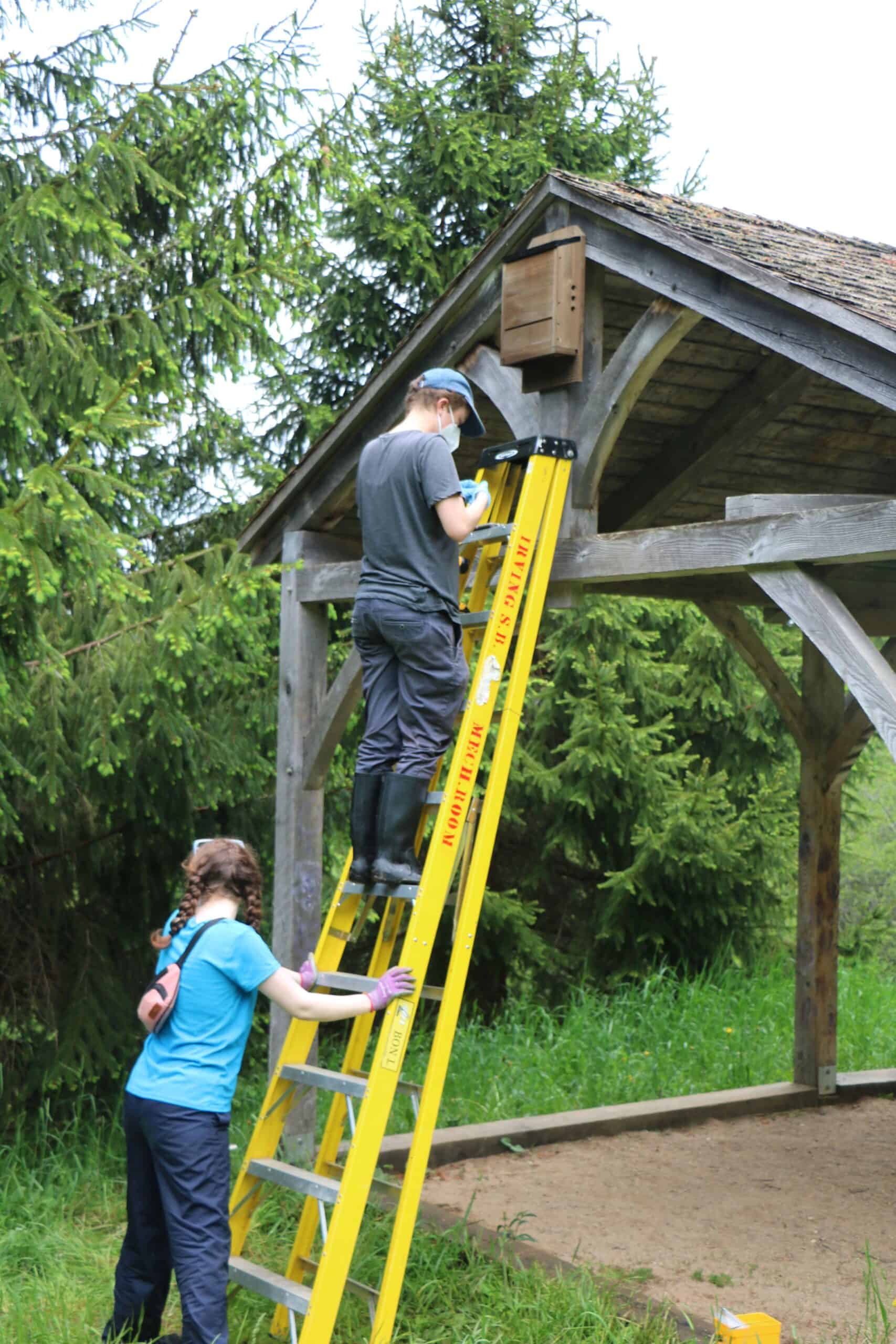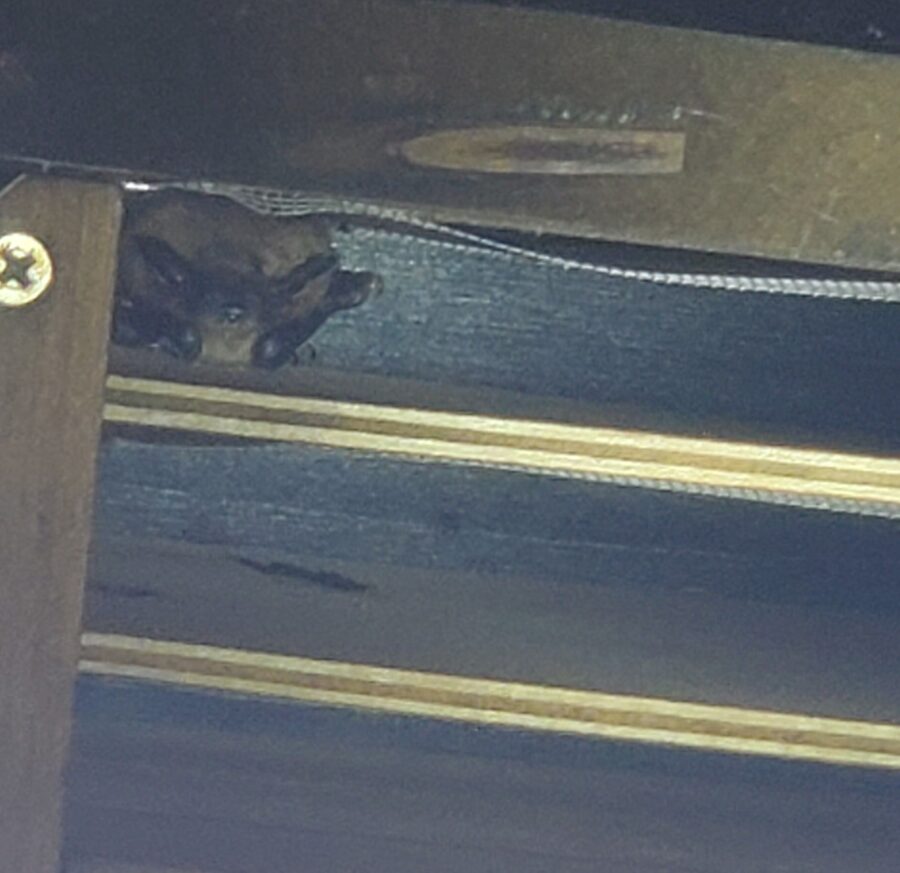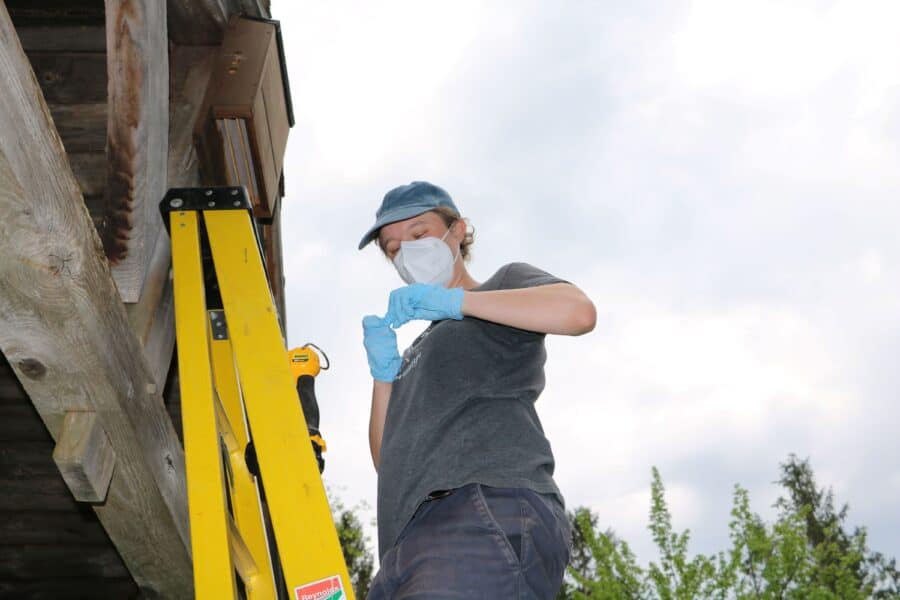
This adorable little guy was spotted during a routine check of one of bat boxes located on our Acadia University Campus. This bat box was first installed in 2021, so we are thrilled to see it being used so quickly. The bat is suspected to be the little brown myotis, one of the endangered bat species found in Nova Scotia. The little brown myotis is a species of bat heavily impacted by white-nose syndrome: a fungal disease that has decimated approximately 94% of Nova Scotia’s hibernating bat population. The discovery of this new roost is very exciting and has been passed on to the Mersey Tobeatic Research Institute, who are dedicated to the monitoring and recovery of endangered bats in Nova Scotia.
Why are bats so important? Bats fulfill many important ecological roles. As keystone species, they have a disproportionately large impact on their environments and help maintain the healthy functioning of an ecosystem. As bats are extremely vulnerable to habitat disturbances, they are often one of the first species affected and act as warning bells, indicating when the health of an ecosystem is at risk. Bats play an important role in nutrient cycling, dispersing seeds through their guano.
In addition, many bats are important pollinators; over 500 plant species rely on bats to pollinate their flowers. Bats are also incredibly important for controlling insect populations, reducing the need for insecticide sprays and other harmful pest management techniques. It is indisputable that bats play critical roles in local ecosystems, further emphasizing the need for bat conservation.


While bats in Nova Scotia have been heavily impacted by white nose syndrome, there are ways that humans can help. Bat boxes, like the one on Acadia University’s campus, are a great way to provide a safe space for bats to roost. They are used by bats to rest during the day, or as maternity roosts for colonies of female bats to raise their young. Bat boxes also provide a unique opportunity for bat researchers to study bats and the white-nose syndrome disease.
The bat box at Acadia University will be studied by bat researchers to monitor for bat activity and white-nose syndrome. Trained and vaccinated researchers will collect samples to test for the fungus that causes white-nose syndrome. This will include bat poop (guano) and swabs, as well as monitoring bat numbers to better understand white-nose syndrome and use of bat boxes by bats. Bat poop has been collected from under the box as part of an honours study project in the Biology Department by Taryn Muldoon, supervised by Drs. Dave Shutler and Don Stewart. Recently, swabs were taken from the box as part of research through the Canada-wide National Bat Box Project. Bat researchers are still looking for occupied roosts to continue monitoring efforts and investigating white-nose syndrome in Nova Scotia. If you see a bat, please report it to www.batconservation.ca, the NS Species at Risk Hotline (toll-free) 1-866-727-3447 or email bats@merseytobeatic.ca.
We are so excited to host this collaboration between researchers and Acadia! Thank you to our alumni Allie Fournier and Michael Robinson for donating this box!


 Acadia University
Acadia University